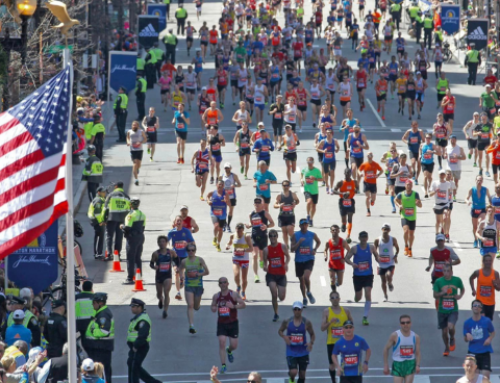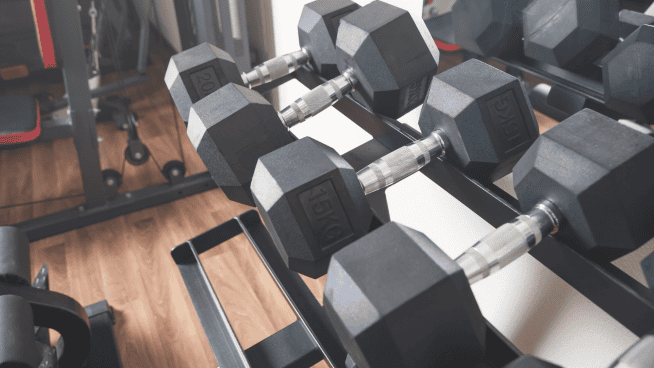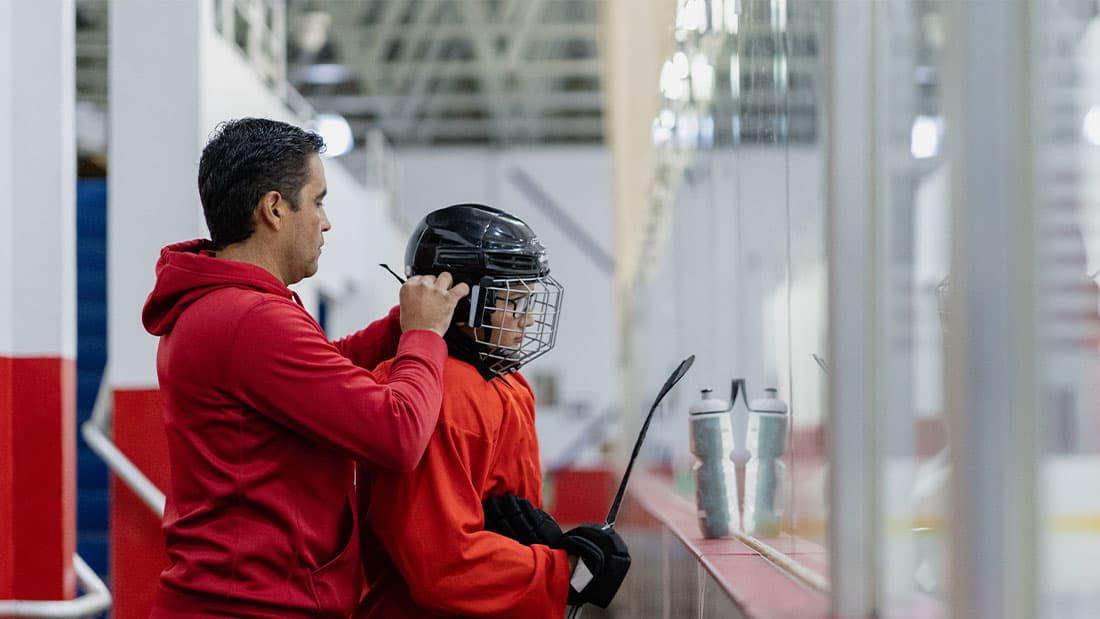What Happens When You Stop Training In-Season
You train during the off-season, you play during the season. After having worked with hundreds of athletes across a wide spectrum of sports, this seems to be the prevailing mindset.
I sympathize with it because I myself thought that way when I was younger. However, this line of thinking is destructive to your own performance. Don’t believe me? Let’s outline a few reasons why in-season training is an absolute must for any athlete looking to play at a high level when it matters most.
There are accumulated effects from training that take weeks and sometimes months to occur. Examples include muscle hypertrophy and improvements in motor unit recruitment which results in greater strength and power display for athletes. If an athlete discontinues training and only participates in sport-related practices, they are no longer providing the catalyst that creates lasting changes in the body that will allow them to be more structurally resilient and stronger in the coming weeks. Over time, you will see a deterioration in tissue strength while common aches and pains begin to emerge during the middle and end of the season. This is ideally when performance should be peaking, but the opposite is in fact occurring.
I’m not saying that you should continue training just how you did in the off-season during your season. But what I am saying is that avoiding training entirely during the season is a risky choice, and the negative effects of that choice are often most pronounced at the time you’re playing your biggest games.
Of course, you don’t want to be training so hard in-season that fatigue and other factors are actually making you play worse. With in-season training, a little goes a long way. Research has shown that you can maintain strength gains with a reduced training volume, so long as the intensity remains relatively high. So for an in-season athlete who normally performs 4-5 sets of a given resistance or max-effort drill, scale back the volume but only slightly reduce intensity. If you were training at 85-95% of your 1RM, which is pretty common, consider lowering it to 65-80% and keeping the bar speed and effort high. This is especially important during the concentric phase of the movement, where muscle damage and soreness aren’t a concern. If you think in-season training doesn’t matter, consider that the New England Patriots’ strength and conditioning staff is known to have their players squat with 80% of their max during Super Bowl week.
Strength Training
Strength training is a fantastic way to improve levels of both intramuscular and intermuscular coordination levels between an individual’s muscles and muscle groups or synergies. The general idea is that in order to lift a heavy mechanical load, all of the involved musculatures will need to increase their efforts collectively in a coordinated effort to create a greater overall summation of force to overcome the resistance. If this doesn’t occur, then we fail at the attempt.
The same function works with sprinting, jumping, etc. but with different forms of resistance. Adding another tool to your coordination development arsenal would be a great idea since a lot of athletes naturally lack coordination, and a lack of it will lead to lowered performance and perhaps even injury if the deficit is strong enough. I believe single limb work should be a primary option during the season since it places more of a coordination and stability demand than bilateral work, and also naturally reduce your ability to lift as much weight unless you are a freak in the weight room.
Dr. Rusin published an article written by Dr. Mario Novo that I consider the bible on recovery and regeneration methods. I live by a lot of it and our entire training staff implements these practices regularly with our clients. As you can see, strength training is very corrective and rehabilitative in nature and is the primary safeguard against high levels of physical stress. Hormone levels, tissue repair/remodeling, and strength and muscle building genes are all upregulated or increased with proper and progressive resistance training, regardless of the time of year. Overreaching is almost inevitable at some point during the competition phase of sport, but the small dose of strength training that you practice with your athletes could definitely go a long ways in preventing injury and maintaining the progress they made prior to the start of the season.
Strategic Deconditioning
Another thing to consider is a natural training effect that occurs called “Strategic Deconditioning.” Bottom line is that when we cease strength training, the fascial sheath which serves as a protective barrier will diminish to a degree, leaving the muscle more predisposed to damage. Muscle damage, when chronic enough, can lead to eventual injury. This is yet another reason why athletes should partake in strength training during sport in-season to offer themselves more insurance against potential injury. Here is an article I wrote for Mike Robertson years back that discusses the training term in more depth.
Involution Phenomenon
Last but not least is a phenomenon that occurs with the removal of strength and elements of athletic training, and that is involution. I honestly cannot recall when and where I first heard this term, I think it was from Charlie Francis, but involution is the return to original baseline training levels once an athlete or client has stopped training. So basically, if you don’t use it, you lose it. Now I know many would immediately argue that muscle and performance gains can return fairly quickly and effects from past training do accumulate, which could offset involution or natural decline, but this definitely seems to vary from athlete to athlete from what I’ve seen. And why risk it? Especially with the proposed benefits from above.
The idea “you train during the off-season, you play during the season” is antiquated and counterproductive to high performance. Bottom line is that the most successful athletes I’ve ever personally worked with or witnessed make in-season training a staple. This allows for a steady increase of performance to occur over the long-term and helps them put their best foot forward during the biggest competitions of their calendar year.
RECOMMENDED FOR YOU
MOST POPULAR
What Happens When You Stop Training In-Season
You train during the off-season, you play during the season. After having worked with hundreds of athletes across a wide spectrum of sports, this seems to be the prevailing mindset.
I sympathize with it because I myself thought that way when I was younger. However, this line of thinking is destructive to your own performance. Don’t believe me? Let’s outline a few reasons why in-season training is an absolute must for any athlete looking to play at a high level when it matters most.
There are accumulated effects from training that take weeks and sometimes months to occur. Examples include muscle hypertrophy and improvements in motor unit recruitment which results in greater strength and power display for athletes. If an athlete discontinues training and only participates in sport-related practices, they are no longer providing the catalyst that creates lasting changes in the body that will allow them to be more structurally resilient and stronger in the coming weeks. Over time, you will see a deterioration in tissue strength while common aches and pains begin to emerge during the middle and end of the season. This is ideally when performance should be peaking, but the opposite is in fact occurring.
I’m not saying that you should continue training just how you did in the off-season during your season. But what I am saying is that avoiding training entirely during the season is a risky choice, and the negative effects of that choice are often most pronounced at the time you’re playing your biggest games.
Of course, you don’t want to be training so hard in-season that fatigue and other factors are actually making you play worse. With in-season training, a little goes a long way. Research has shown that you can maintain strength gains with a reduced training volume, so long as the intensity remains relatively high. So for an in-season athlete who normally performs 4-5 sets of a given resistance or max-effort drill, scale back the volume but only slightly reduce intensity. If you were training at 85-95% of your 1RM, which is pretty common, consider lowering it to 65-80% and keeping the bar speed and effort high. This is especially important during the concentric phase of the movement, where muscle damage and soreness aren’t a concern. If you think in-season training doesn’t matter, consider that the New England Patriots’ strength and conditioning staff is known to have their players squat with 80% of their max during Super Bowl week.
Strength Training
Strength training is a fantastic way to improve levels of both intramuscular and intermuscular coordination levels between an individual’s muscles and muscle groups or synergies. The general idea is that in order to lift a heavy mechanical load, all of the involved musculatures will need to increase their efforts collectively in a coordinated effort to create a greater overall summation of force to overcome the resistance. If this doesn’t occur, then we fail at the attempt.
The same function works with sprinting, jumping, etc. but with different forms of resistance. Adding another tool to your coordination development arsenal would be a great idea since a lot of athletes naturally lack coordination, and a lack of it will lead to lowered performance and perhaps even injury if the deficit is strong enough. I believe single limb work should be a primary option during the season since it places more of a coordination and stability demand than bilateral work, and also naturally reduce your ability to lift as much weight unless you are a freak in the weight room.
Dr. Rusin published an article written by Dr. Mario Novo that I consider the bible on recovery and regeneration methods. I live by a lot of it and our entire training staff implements these practices regularly with our clients. As you can see, strength training is very corrective and rehabilitative in nature and is the primary safeguard against high levels of physical stress. Hormone levels, tissue repair/remodeling, and strength and muscle building genes are all upregulated or increased with proper and progressive resistance training, regardless of the time of year. Overreaching is almost inevitable at some point during the competition phase of sport, but the small dose of strength training that you practice with your athletes could definitely go a long ways in preventing injury and maintaining the progress they made prior to the start of the season.
Strategic Deconditioning
Another thing to consider is a natural training effect that occurs called “Strategic Deconditioning.” Bottom line is that when we cease strength training, the fascial sheath which serves as a protective barrier will diminish to a degree, leaving the muscle more predisposed to damage. Muscle damage, when chronic enough, can lead to eventual injury. This is yet another reason why athletes should partake in strength training during sport in-season to offer themselves more insurance against potential injury. Here is an article I wrote for Mike Robertson years back that discusses the training term in more depth.
Involution Phenomenon
Last but not least is a phenomenon that occurs with the removal of strength and elements of athletic training, and that is involution. I honestly cannot recall when and where I first heard this term, I think it was from Charlie Francis, but involution is the return to original baseline training levels once an athlete or client has stopped training. So basically, if you don’t use it, you lose it. Now I know many would immediately argue that muscle and performance gains can return fairly quickly and effects from past training do accumulate, which could offset involution or natural decline, but this definitely seems to vary from athlete to athlete from what I’ve seen. And why risk it? Especially with the proposed benefits from above.
The idea “you train during the off-season, you play during the season” is antiquated and counterproductive to high performance. Bottom line is that the most successful athletes I’ve ever personally worked with or witnessed make in-season training a staple. This allows for a steady increase of performance to occur over the long-term and helps them put their best foot forward during the biggest competitions of their calendar year.











